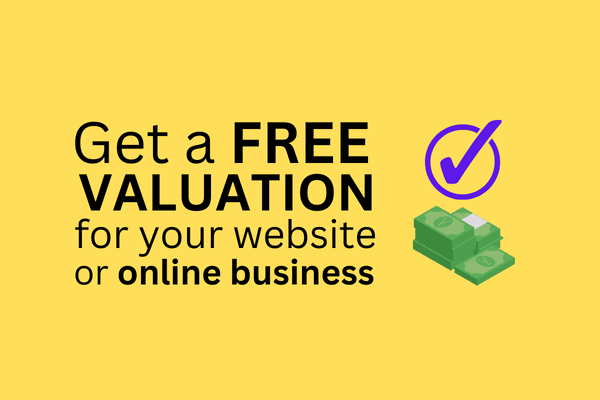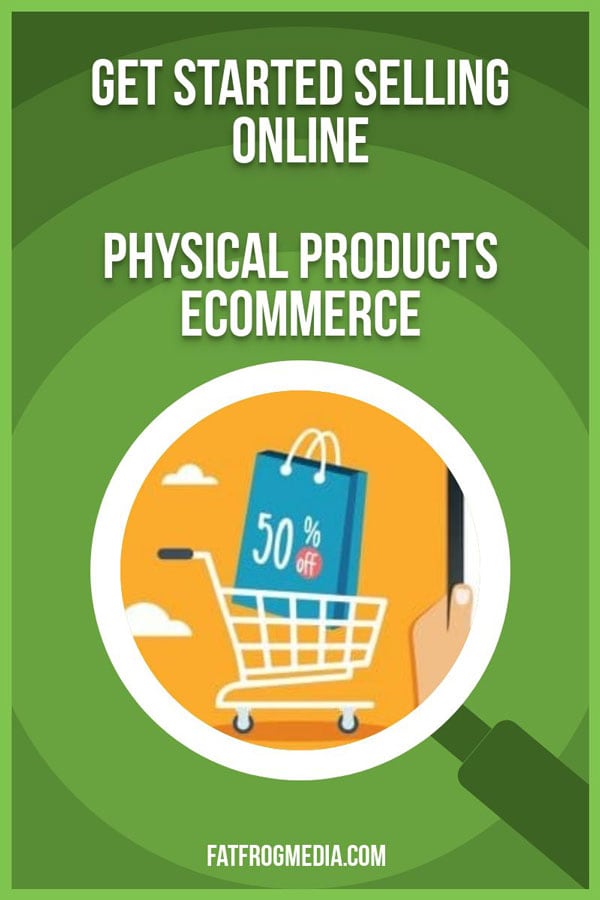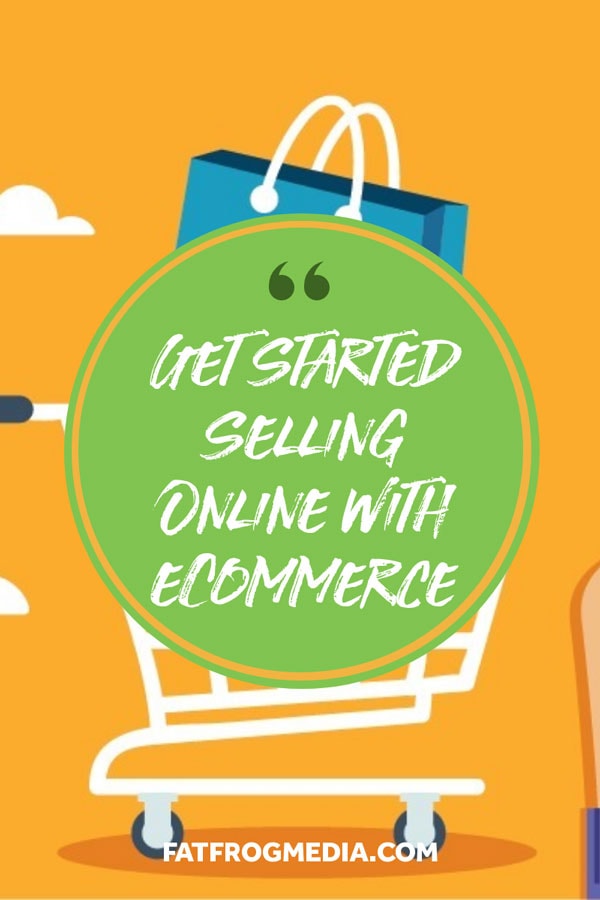Would you like to sell a physical product online? Do you have an idea for a product but don’t know where to start with sourcing and selling online? This guide to starting an e-commerce store will help you save money and offers a few shortcuts to getting up and running.
Here's your beginner guide to setting up a website, sourcing products, marketing, and making sales online.
How To Start An Online Products Store
Is it too late to start an eCommerce store? Worried that you’re too late to the party? Wondering if you’re entering the market at the right time? There’s never a right time. Most people are a little ahead or a little behind the trend. But that doesn’t mean you can’t make money. In fact, selling physical products online is a great business model in 2018.
What About Amazon?
ECommerce store owners should not fear Amazon. In fact, the retail giant is partly to thank for the growth and worldwide acceptance of online sales of pretty much every kind of product.
Niche businesses and experts will always have the advantage over corporations and large websites like Amazon. There are riches in the niches, as they say. Be unique! Be an authority! And be good at marketing! Online sales grew 16% in 2018 and are expected to account for 1 in 8 dollars spent online by 2020.
Smaller businesses are growing fastest of all. Traditional (street front) stores need to make changes in their marketing efforts to keep up with the rise of the online store. As Millenials begin to purchases their own homes, furnish their apartments, and kit out their startup offices, the primary purchasing channel for this tech-savvy demographic is the internet.
Sourcing Products To Sell
You have two options:
- Source products direct from a furniture manufacturer in China (or any country)
- Use a business-to-business wholesaler.
Option 1 has the advantages of lower prices per unit and greater control over the entire process from factory to consumer. But an important disadvantage is that you will need a large capital investment to start up. Factories deal with large Minimum Order Quantities (MOQ). If you have the cash to buy 500 units, then this might suit your needs. But if you’re just getting into the online retail space, this is a risky proposition.
Another disadvantage is the inability to assess the quality of the products before samples arrive. Ordering samples and customising products can be costly. There’s also the potential issue that the samples pass your quality tests but (some of or all of) the items in the bulk order do not. Ask yourself if you really want to invest a lot of money into products that you have never tested on a grand scale!
Option 2 offers a less risky way to start an eCommerce business. Wasting hundreds of hours sifting through endless copycat listings overseas is not a good use of your time. Using a trusted B2B wholesaler saves you time and energy. You don't have to deal with customs and importing, large MOQs, stock control, quality control, and a myriad of other issues.
One of the hardest parts of running a business is finding quality products to sell. Keeping customers happy is vital to the longevity of your business so quality control should be high (if highest) on your list of priorities.

Selling & Accepting Payments
Selling online is much easier today than it was 10 years ago. Stripe, a credit card payment system, integrates well with most commerce platforms and requires no special permission from a bank. But Stripe is an API (Application Programming Interface) and doesn't offer a complete solution for accepting payments without a 3rd party plugin.
If you plan to sell products directly from a sales page or services page, you'll need a shopping cart. ThriveCart is a complete solution for landing pages, shopping carts, affiliate management, and more. ThriveCart gives you high converting checkout pages and upsells.
Pabbly Recurring Payments (with single payments) is a worthy alternative to Thrivecart, especially if you'd prefer a monthly subscription. We use Pabbly at Fat Frog Media for our monthly recurring services.
PayPal is the original online payment system and allows customers to pay via their PayPal account or credit card.
WooCommerce, the most popular shopping cart plugin for WordPress, is supported by plugins for Stripe, Braintree, and Paypal. You can set your store up for online sales in a matter of minutes with these plugins.
WooCommerce also offers a range of add-ons that can take your store to the next level. There are extensions and add-ons for literally everything. Need to create discounts for bulk orders? Easy. Do you need to translate your product pages? No Problem. Want to offer coupons for buyers? done.
Read more about where to sell digital products online.
Find Your Niche
Worldwide searches for “health care products” in Google reaches over 4000 a month.
Over 5000 people a month search for “beauty products online”
Almost 8000 people enter the words “yoga mats online” into Google every month. It’s pretty clear from the search intent that they want to find and buy a yoga mat from an online store. Amazon ranks 3rd in the search results but there are plenty of other contenders. Note that these people are not typing “yoga mats online Amazon”.
There’s never been a better time to start a business online. ECommerce stores can be one of the most profitable busienss models.
Technically, setting up a store is not difficult. And compared to setting up a warehouse or store, online stores are extremely easy to start.
Branding Your Store
Make sure your brand stands out in a busy crowd. A strong brand is as important in the online space as in the traditional bricks and mortar business world.
These days, branding is even more important. Google puts a lot of weight on brands in the search results. In fact, the volume of searches for your brand name is a ranking signal to Google. The search engine sees high numbers of searches for your company name as a sign of quality. This is the power of branding.
Processing, fulfilling, and shipping orders
When a customer decides to order from you, the order management process usually goes like this:
- Customer places order
- Payment accepted by credit card payment system, PayPal or some other processing software
- Order is sent to warehouse
- Order is picked and packaged
- Shipping labels are printed
- Return labels are printed
- Courier or shipping company is contacted and delivery order placed.
- Items are shipped.
- Inventory levels are updated
This is a high-level overview of the process.
What most people don't realize is that you can automate a lot of the heavy work. Tools like Zapier, Pabbly Connect (a Zapier alternative), and Uncanny Automator for WordPress can help. By creating Standard Operating Procedures (SOP) you can hand off the repetitive tasks to Virtual Assistants or staff.
Alternatively, it's possible to outsource the entire process to a company like ShipStation. ShipStation saves you money through its powerful connections with shopping companies like Fedex and UPS. It can help you choose the best and cheapest delivery method depending on the customer. Automate everything with this all-in-one service.
ShipBob is another great choice for e-commerce sellers who want to remove the pain of picking, packing, and shipping products. ShipBob is a global logistics platform that enables direct-to-consumer businesses to fulfill online orders from customers all around the world through a single platform.
Customer Service
One way you can stand out is by providing the highest quality customer service possible. Local businesses and businesses with monopolies could get away with bad customer service in the past. People didn't have a choice. But that’s not the case anymore.
The adage that a happy customer tells one other person but an unhappy one tells ten other people is true. Internet-based businesses have much to gain from online reviews. Getting reviews on Google and Facebook, for example, will help your site rank higher in search results. Social proof benefits your business. Ask satisfied customers to write about their experiences online. Offer the best customer service in your niche and reap the benefits in the long term.
Getting Customers
The methods for attracting and converting customers, in its simplest form, is a two-stage process:
- Building an SEO-driven website
- Implementing effective marketing
SEO-Optimized Website
It should go without saying, but here it is anyway: Have a fast, user-friendly, and professional-looking website. Don’t scrimp on the look of your business. Would you put a handwritten sign on the door of your physical shop? At the same time, don’t obsess over small details until you have the time and money to work on them. When you’re just starting out, the tasks that move the needle the most should be your focus.
A fast website is imperative. Speed is a ranking factor. Get the best web hosting you can afford.
These days, small players can build stores that challenge established brands without spending a fortune. WordPress, a popular Content Management System, allows you to create an online store in a matter of minutes. Shopify is an eCommerce platform for creating fully functioning web stores with little technical knowledge. I don’t recommend Shopify if you plan on expanding past an online store. For blogging and other types of businesses, it’s not a good option. For everything else, stick with the excellent WordPress CMS.
There are many ways to get started with selling online, but one of the quickest and most effective methods is to buy a website that already has traffic and authority in Google. This will give you a strong foundation on which to build your business and start seeing results quickly.
Alternative Platforms
If building your own ecommerce store on WordPress or Shopify seems like a lot of work, you can sell your physical products on Etsy. As one of the most trusted and established ecommerce platforms, Etsy has millions of buyers browsing for products every month.
To get started selling on Etsy, check out Alura, a tool designed to help you with keyword research, product research, listing optimization, and more. It's a really great tool that I've been exploring and can recommend.
Marketing
Marketing is a broad subject but apart from content marketing and SEO, here are the most common channels businesses use to attract customers and sell products:

Social Media
Many people don’t realise that you can sell using social media. Facebook allows you to connect your website to your business page and sell direct to users.
Reddit, the hugely popular forum, began selling ads to businesses last year. Results appear to be good. But that’s not the only reason to get accounts on these websites. The marketing potential of viral traffic, cheap ads, and organic (free) traffic is huge.
Facebook's 2017 algorithm changes saw big organic traffic numbers drop. The company wants businesses to buy ads on the social network. Facebook ad costs rise every year but they are still a viable option for many businesses.
One great thing about Facebook’s ad platform is that a business can target potential customers to a very granular level. Want to sell a sofa to a 30-year-old female office worker who likes watching movies. Facebook ads allow you get to get clicks from this exact demographic. And the targeting options can be even narrower.
And don't discount the other social networks. Instagram (also owned by Facebook) and Pinterest are two big hitters in the social media space. Both social media networks will work well with material that is visual in nature (physical products, for example).
Online Advertising
Google Ads (previously called Adwords) are one of our favourites options for online advertising. Google Ads can be effective for promoting your business on Google but ads require skilled management to keep costs down. There are many courses available which teach business owners how to use Adwords. If you haven’t got the time to learn, hire a Pay Per Click (PPC) professional.
A huge advantage that online advertising has over traditional advertising is the ability to measure the return on investment (ROI). Most advertising platforms allow you to track where sales are coming from so you can see how often you generate a lead or make a sale based on the individual ads.
By trying different campaigns and testing you can double down on what’s working. For example, if one campaign get you $1500 in sales from $1000 in ad spend and a similar campaign only gets $1400 from the same spend, focus your efforts on the better performing campaign. It is then a case of “the more you spend, the more you make”, as long as you can supply.
If you're running an Amazon store you might want to consider Amazon PPC ads. It can be very effective on the platform but it also gives you a ton of data that you can use on your own platform. Amazon ads can be tricky so it's worth outsourcing this task or using a service like SellerMetrics to save time and money.
Email Marketing
Email is still an effective marketing channel. Marketers talk about the (unconfirmed) demise of email but it remains one of the best ways to promote your products to customers. Learn how to use autoresponders, mailing list tools, and segmentation of customer lists.
Use email to upsell and provide extra value to current customers. When you have a discount to offer you can send to your list. Open rates vary per industry but a large percentage of your customers will see your email and this will generate leads.
Some great email marketing platforms include
- MailChimp – the most famous email marketing tool. Great to start but with can be unintuitive and expensive.
- Beehiiv – blazing fast user interface and generous free plans. My choice for serious digital product sellers and the new email marketing and newsletter tool that is beating all of the competitors.
- MailerLite – established and highly-trusted platform. Combines email marketing and website building with an interface that's easy to learn. MailerLite’s key selling point is its user-friendly tools, such as a Drag & Drop email editor, and simple, attractive UI.
Converting Visitors to Customers
Once someone lands on your website, you've got a small window of opportunity to turn them into a customer. Losing them because they didn't understand your offer or couldn't find the information they need is a wasted opportunity.
Fortunately, there are apps and tools designed to help convert more visitors to customers.
- Use Emails, SMS, Facebook Messenger, Facebook Ads and Automatic Calls to convert more customers into sales.
- Understand your customer journey and what's driving sales by installing a Conversion Rate Optimization tool. Create A/B tests to see what kind of copy and call-to-action drives conversions and more sales.
Registering Your Business
Should you register a business?
That’s a difficult question to answer. Registering a new business incurs some costs and involves a bit of paperwork. If you’re just testing the waters with a business idea, there’s no need to register your business name. But if you have a bit of capital to spare, have a long-term plan with investment, and have a “brand name”, it might be worth registering your business.
But before you go down that path, it's worth having everything in order. Use a service like Termly to get legal cookie notices, privacy policies, GDPR compliance documents, and everything else you need to prevent problems.
What's Next?
Built a profitable ecommerce business? It might be time to sell. In 2021, websites are the digital equivalent of prime real estate. Investors are always on the lookout for profitable online opportunities. Head over to Flippa or Empire Flippers and list your business so that thousands of investors have the chance to bid on it.




Comments are closed.